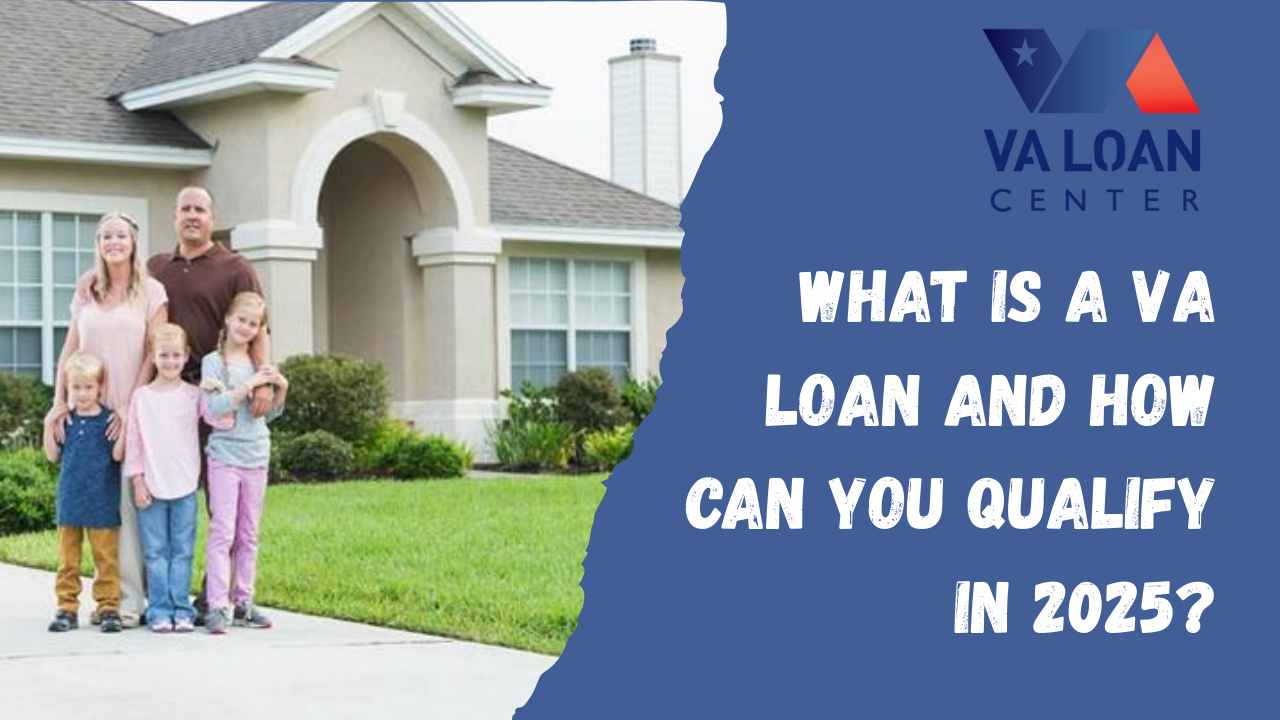Introduction
If you’re a veteran, an active-duty service member, or an eligible surviving spouse, buying a home in 2025 may be more accessible than you think—thanks to VA loans. Backed by the U.S. Department of Veterans Affairs, VA loans are a powerful home financing benefit that offer several advantages over conventional mortgages. With zero down payment, no private mortgage insurance (PMI), and competitive interest rates, VA loans are designed to reward your service by making homeownership easier and more affordable.
This guide breaks down how VA loans work, who qualifies, how to apply, and what you can expect in 2025.
Understanding VA Loans
How VA Loans Work
VA loans are designed to make homeownership more accessible for those who have served our country. Here’s a breakdown:
- No Down Payment Required: One of the most significant advantages is the ability to purchase a home without a down payment.
- No PMI: Unlike conventional loans, VA loans don’t require private mortgage insurance, reducing monthly payments.
- Competitive Interest Rates: Thanks to the VA’s backing, lenders often offer lower interest rates compared to conventional loans.
- Flexible Credit Requirements: While the VA doesn’t set a minimum credit score, lenders typically look for a FICO score of around 620.
- Limited Closing Costs: The VA limits the amount veterans can be charged in closing costs, and sellers can pay all of them.
- No Prepayment Penalties: Borrowers can pay off their loan early without facing additional fees.
VA Loan Limits in 2025
In 2025, the standard VA loan limit for most U.S. counties is $806,500, reflecting a 5.2% increase from 2024. In high-cost areas, this limit can go up to $1,209,750. It’s essential to note that these limits don’t cap the loan amount but determine how much a qualified veteran can borrow without making a down payment, depending on their entitlement used.
Eligibility Requirements for 2025
Service Requirements
To qualify for a VA loan in 2025, applicants must meet specific service criteria:
- Active-Duty Members: At least 90 continuous days of service.
- Veterans: Minimum service requirements vary by service era, ranging from 90 days to 24 months.
- National Guard and Reserve Members: Six creditable years of service or active duty.
- Surviving Spouses: May be eligible if the veteran died in service or from service-related disabilities.
Certificate of Eligibility (COE)
A COE is required to prove eligibility. It can be obtained online, through a lender, or by mail. Additional documentation may be needed depending on service status.
Financial Requirements
- Credit Score: While the VA doesn’t mandate a minimum, lenders typically require a FICO score between 620 and 670.
- Income and Employment: Lenders assess steady income and employment to ensure the ability to repay.
- Debt-to-Income Ratio (DTI): Usually required to be 41% or less.
- Funding Fee: An upfront fee that varies based on down payment and whether it’s a first or subsequent use of the VA loan benefit.
Applying for a VA Loan in 2025
- Obtain Your COE: Confirm eligibility through the VA.
- Find a VA-Approved Lender: Compare rates and terms.
- Get Preapproved: Submit financial documents to the lender.
- House Hunt: Find a home that meets VA standards.
- Appraisal: A VA-approved appraiser will inspect the property.
- Close the Loan: Finalize the paperwork and move into your new home.
Current VA Loan Interest Rates
As of May 2025, VA loan interest rates are competitive:
| Loan Type | Interest Rate | APR |
| 30-year Fixed VA Purchase | 5.875% | 6.32% |
| 15-year Fixed VA Purchase | 5.75% | 6.51% |
| 30-year Fixed VA Refinance | 6.25% | 6.49% |
| 30-year Fixed VA Jumbo | 5.99% | 6.47% |
Note: Rates vary based on credit score, loan term, and other factors.
Pros and Cons of VA Loans
Pros
- No Down Payment: Makes homeownership accessible.
- No PMI: Reduces monthly payments.
- Competitive Rates: Often lower than conventional loans.
- Flexible Credit Requirements: Accommodates a range of credit profiles.
Cons
- Funding Fee: Adds to upfront costs.
- Primary Residence Requirement: Cannot be used for investment properties.
- Property Standards: Homes must meet specific VA criteria.
Also Read: How to Save for Retirement in Your 30s: The Ultimate 2025 Guide for Smart Professionals
Frequently Asked Questions (FAQs)
1. Can I get a VA loan more than once?
Yes. You can use your VA loan benefit multiple times as long as your entitlement is restored. This typically happens when your original loan is paid off and the property is sold.
2. Do VA loans have a maximum loan amount?
No, but lenders may limit how much they’ll loan without a down payment. In most counties, full entitlement allows for loans up to $806,500 in 2025 without a down payment.
3. Can I use a VA loan to buy a second home or investment property?
No. VA loans are intended only for purchasing a primary residence.
4. What is the VA funding fee in 2025?
The fee ranges from 1.25% to 3.3% of the loan amount, depending on factors like down payment and whether you’ve used the benefit before. Some veterans are exempt due to service-connected disabilities.
5. Is there a minimum income to qualify for a VA loan?
There’s no specific income requirement, but your income must support your monthly obligations, including the new mortgage.
6. Can I refinance a VA loan?
Yes. You can use the VA Interest Rate Reduction Refinance Loan (IRRRL) to refinance to a lower rate, or choose a VA cash-out refinance.
7. Does the VA provide the loan directly?
No. VA loans are offered by private lenders such as banks and mortgage companies, but the VA guarantees a portion of the loan.
Don’t Miss: Best Life Insurance Plans in the USA for Families (2025)
Conclusion
VA loans in 2025 continue to offer a valuable path to homeownership for those who have served our country. With benefits like no down payment, no PMI, and competitive interest rates, they provide an accessible and affordable option. However, understanding the requirements and potential drawbacks is crucial. By staying informed and working with knowledgeable professionals, veterans and service members can make the most of this opportunity.
Disclaimer: This article is for informational purposes only and does not constitute financial advice.






